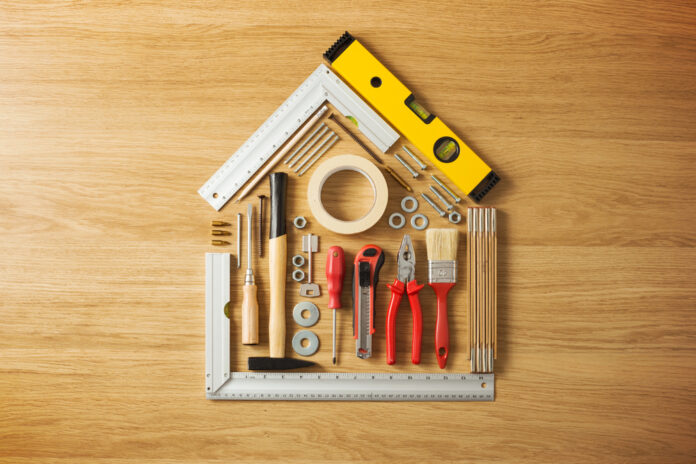Thinking of diving into a home renovation? It’s a big step, especially if it’s your first time. But don’t worry, with a bit of planning and the right approach, you can turn your space into something truly special. Whether you’re updating a single room or tackling a whole house, these ten steps will help guide you to success.
Key Takeaways
- Set clear goals for your renovation to guide every decision you make.
- Create a realistic budget that includes a cushion for unexpected costs.
- Choose professionals who understand your vision and can deliver quality work.
- Plan your project in detail, covering timelines and necessary permits.
- Stay adaptable and open to changes as your project progresses.
1. DEFINE YOUR RENOVATION GOALS
Embarking on a renovation journey can be both exciting and overwhelming, especially for first-timers. Before you start tearing down walls or picking out paint colours, it’s important to define your renovation goals. This step is the foundation of any successful remodelling strategies and will guide every decision you make along the way.
What Are Your Objectives?
Start by asking yourself what you hope to achieve with your renovation. Are you looking to increase your home’s value for a future sale, or do you simply want to make it more functional for your family? Here are some common objectives to consider:
- Increase home value: If you’re planning to sell your home in the near future, focus on upgrades that will offer a good return on investment.
- Improve functionality: Maybe you need more storage in your kitchen or a better layout in your bathroom.
- Modernize aesthetics: Sometimes, a fresh look is all you need to fall in love with your home again.
Common Renovation Projects
Some projects are more popular than others when it comes to home renovations. Here are a few that often top the list:
- Kitchen renovations: Upgrade appliances, add counter space, or refresh cabinets.
- Bathroom renovations: Install new fixtures, upgrade to a luxurious shower, or add a double sink.
- Basement remodeling: Transform your basement into a family room, home office, or guest suite.
Take the time to write down your goals. This not only keeps them top of mind but also helps you communicate them clearly to any professionals you might hire. For more detailed advice, check out this renovation planning guide that offers a comprehensive first-time renovation checklist and tips on budgeting for home renovations.
2. BUDGET WISELY
Jumping into a renovation without a solid budget is like driving blindfolded. Setting a realistic budget is your roadmap to success. Here’s how you can do it right:
Understand Your Financial Limits
Before you even think about knocking down walls or buying new appliances, sit down and figure out your financial boundaries. Look at your savings, potential loans, and any other sources of funds. This will give you a clear picture of what you can afford.
Create a Detailed Budget Plan
List every possible expense. Think about materials, labor, permits, and those sneaky unexpected costs that always pop up. It’s wise to add a contingency fund—about 10-20% of your budget—to cover these surprises.
Prioritize Your Spending
Not all renovation projects are created equal. Focus on the areas that will give you the most bang for your buck. Whether it’s a new kitchen or a bathroom upgrade, make sure you’re investing in changes that will enhance your home’s value and your quality of life.
Track Your Expenses
Keep a close eye on your spending throughout the renovation. Use apps or spreadsheets to monitor expenses and compare them against your budget. This helps you stay on track and avoid overspending. By keeping a close eye on your spending, you can ensure that your renovation stays within budget and meets your expectations.
3. HIRE THE RIGHT PROFESSIONALS
Embarking on a home renovation? You’ll want to get the right folks on board. Choosing the right professionals can make or break your project. You’re not just hiring people; you’re assembling a team that will bring your vision to life.
Know Who You Need
First off, identify the key players. For most renovations, you’ll need a general contractor. If your project is more complex, consider an architect or designer. These pros will help shape your ideas into reality.
Check Credentials
Don’t just go with the first name you find. Check their credentials. Are they licensed and insured? What’s their track record? Look for reviews and ask for references. You want someone who knows what they’re doing.
Review Past Work
Take a look at their previous projects. This will give you a sense of their style and quality. If possible, visit a site they’ve worked on. Seeing their work in person can be revealing.
Get Multiple Bids
Don’t settle on the first estimate. Collect multiple bids to ensure you’re getting a fair price. This also gives you a chance to compare services and see who’s offering the best deal.
For more on hiring the right contractor, check out this guide to help you navigate the process with confidence.
4. CREATE A DETAILED PROJECT PLAN
Creating a detailed project plan is like drawing a roadmap for your renovation journey. Without it, you’re bound to hit some bumps along the way. Here’s how you can set the stage for a smoother renovation process.
Set Clear Objectives
First things first, know what you want. Are you looking to modernize your kitchen, add more space, or maybe just refresh the look of your living room? Having clear objectives will guide every decision you make.
Break Down the Tasks
List out every single task that needs doing. From demolition to painting, write it all down. This way, nothing gets overlooked, and you can better manage your time and resources.
Develop a Timeline
Draft a timeline that outlines when each task should start and finish. Consider the availability of contractors and potential delays. Sticking to a timeline helps keep everyone accountable.
Budget Allocation
Allocate your budget wisely. Decide how much you can spend on each part of the renovation. This helps you avoid overspending and keeps your finances in check.
Coordinate with Professionals
Make sure to coordinate with any professionals involved, like architects or contractors. Regular check-ins can prevent misunderstandings and keep the project on track.
5. OBTAIN NECESSARY PERMITS
Renovating without permits is risky. Permits are essential to avoid legal issues. Here’s what to know:
- Determine Needed Permits: Different projects require different permits, like adding a deck or changing plumbing.
- Understand the Process: Each city has its own application process. It may seem daunting, but it’s usually simple if you have your documents ready.
- Comply with Codes: Building codes ensure safety. Align your plans with these to prevent setbacks.
- Consult Professionals: Getting expert advice can help navigate the permit process.
- Track Your Permits: After applying, monitor your permits and follow up as needed. Remember, permits ensure your renovation is safe.
6. RESEARCH AND GATHER INSPIRATION
Embarking on a renovation journey can feel like standing at the foot of a mountain, unsure of where to start climbing. Finding the right inspiration is your first step. Dive into a mix of resources to spark your creativity and shape your vision.
Explore Different Sources
- Pinterest & Instagram: These platforms are treasure troves of trending home decor styles. Scroll through countless images to find what resonates with you.
- Home Improvement Shows: Watching shows can give you a visual of what’s possible, transforming abstract ideas into tangible plans.
- Magazines & Websites: Publications like Dwell and HGTV offer a wealth of ideas. They cover everything from modern to classic styles.
- Visit Showrooms: Seeing materials and fixtures in person can solidify your choices. Feeling the texture of a countertop or the weight of a fixture can make all the difference.
Identify Your Style
Once you’ve gathered enough inspiration, it’s time to pinpoint your style. Are you into the sleek lines of minimalism or the cozy charm of a modern farmhouse? Knowing your style helps in making cohesive design decisions.
Keep a Mood Board
Collect images, color swatches, and material samples in one place. A mood board isn’t just a collection of pretty pictures; it’s your renovation roadmap. It helps you stay focused on your vision and avoid getting sidetracked by fleeting trends.
Consider Practicality
While aesthetics are important, don’t forget about practicality. You might love the look of open shelving, but if you’re someone who values a clutter-free kitchen, it might not be the best choice.
Begin your house renovation
When you’re ready to take the plunge, consider selecting an architect who aligns with your vision. They can help you create a comprehensive layout and design plan for essential areas like the kitchen and bathroom. This will ensure your renovation is not just beautiful but functional too.
7. PREPARE YOUR HOME
Before the hammers start swinging, it’s important to get your space ready for the chaos of renovation. Proper preparation can make a world of difference in how smoothly things go.
Declutter and Organize
Start by getting rid of stuff you don’t need. This isn’t just about making space; it’s about creating a safer environment. You don’t want anything precious getting damaged or in the way.
Protect Your Belongings
Cover your furniture and seal off vents to keep dust and debris at bay. You might want to move plants and other delicate items to a safer spot, maybe even outside. This step is crucial to maintaining an organized and safe environment during the renovation. It’s also a good time to consider pest control services to prevent insects or rodents from invading while walls and structures are exposed.
Create a Temporary Living Space
If you’re planning to stick around during the renovation, setting up a temporary living area can help you maintain some normalcy. This might mean shifting your bedroom to another part of the house or setting up a mini kitchen in the garage.
Here’s a simple checklist to help you get started:
- Pack away belongings you don’t need daily.
- Cover and protect furniture, floors, and vents.
- Move plants and delicate items to a safe zone.
8. COMMUNICATE EFFECTIVELY
Alright, so you’ve got your renovation plans laid out, but here’s the kicker: communication is key. Without it, even the best-laid plans can crumble.
- Set Clear Expectations: Ensure everyone knows timelines, budgets, and specific requirements. Reinforce these points throughout the project.
- Regular Updates: Check in frequently to catch issues early and adjust before they escalate. Don’t wait until the end to assess progress.
- Open Door Policy: Invite contractors and designers to ask questions. Avoid guesswork.
- Be Flexible: Things might not always go as planned, and that’s okay. Being open to change and ready to discuss alternatives can save you a lot of stress.
By focusing on effective communication, you not only keep things moving smoothly but also build a stronger relationship with your team. This is what turns a good renovation into a great one.
9. STAY FLEXIBLE AND ADAPT
- Renovations rarely go as planned. From delays to design changes, adaptability is key. Here’s how to stay on track: Expect the Unexpected: Surprises will happen; be ready to make quick decisions.
- Budget for Flexibility: Set aside part of your budget for unforeseen expenses to avoid financial surprises. Embrace Change: A change in plans can lead to better outcomes; stay open to new ideas.
- Prioritize Communication: Keep communication open with contractors and designers to address issues early. Stay Calm and Patient: Renovations can be stressful; maintain calmness as you face challenges.
- For more insights on flexibility during renovations, consider how planning for design in 2025 involves adapting to new challenges.
10. CONSIDER ENERGY EFFICIENCY
When you’re diving into a renovation, thinking about energy efficiency isn’t just about saving a few bucks on your utility bills—it’s about making your home more comfortable and reducing its environmental footprint.
Maximize Insulation
First off, let’s talk insulation. Upgrading your home’s insulation can make a world of difference. If your place is old, chances are it leaks heat like a sieve. Look into adding or improving insulation in the walls, attic, and even floors. A well-insulated home stays warmer in winter and cooler in summer, which means less reliance on heating and cooling systems.
Upgrade Windows and Doors
Next, check out your windows and doors. Single-pane windows and drafty doors are major culprits in energy loss. Consider swapping them out for double or triple-glazed windows and well-sealed doors. Not only do they keep the temperature stable, but they also cut down on noise from outside.
Invest in Energy-Efficient Appliances
While you’re at it, think about the appliances you use every day. Old fridges, ovens, and washers can be energy hogs. Switching to energy-efficient models might have a higher upfront cost, but they pay off in the long run with lower energy bills.
Wrapping Up Your Renovation Journey
So, there you have it—10 steps to help you nail your first renovation. It’s a mix of planning, patience, and a bit of flexibility. Remember, things might not always go as planned, and that’s okay. Adjusting on the fly is part of the process. Keep your goals in sight, communicate clearly with your team, and don’t be afraid to ask for help when needed. At the end of the day, it’s about creating a space that feels right for you. Happy renovating!
Find a Home-Based Business to Start-Up >>> Hundreds of Business Listings.















































